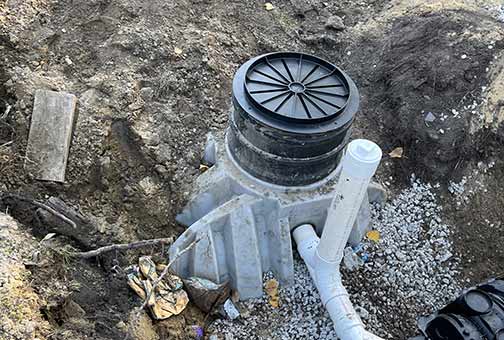
A frozen septic tank is a septic tank that cannot do the job it is designed for. That is because for a septic tank to treat wastewater effectively that water has to be able to flow through the system, says H&M Management team. But if the septic tank is frozen water cannot flow through it.
Strange as this may sound to some, this is a common problem in certain parts of the country. Why do septic tanks freeze? What can you do to prevent the problem? How can you solve it if you have a frozen septic tank?
These questions will be fully answered in this post.
Why do septic tanks freeze?
There are several reasons why this happens:
- The septic tank is not installed below the frost line
The frost line is how deep water will freeze below the ground surface during winter; this varies according to location. The upper part of your septic tank should be well below the frost line or your tank could freeze in winter.
- The septic tank is not being used or it is not being used enough
This is because standing water gets colder much faster than flowing water. If there isn’t a lot of water flowing through the system and the weather gets cold, the septic tank could freeze.
- The pipes leading into it are not buried deep enough
The exposed pipes transfer cold into the septic tank, lowering its temperature. The added materials inside a septic tank also help to insulate it; a septic tank is likely to freeze if its content is scanty.
- The top layer above a septic field is compacted
If cars are driven on it, the soil will lose its insulating properties. Also, if the layer of snow above the septic tank becomes compacted – instead of fluffy – it can encourage the tank to freeze.
- Prolonged cold snap
This can lower the frost line in your location, causing your septic tank to freeze. But this problem only happens occasionally.
Tips to keep your septic tank from freezing
- Bury the tank below the frost line
If you are installing a new septic tank, make sure the tank is well below the frost line in your location. If your existing septic tank is in danger of freezing, follow the steps below to prevent it.
- Add insulation above the tank
Starting in September, you should stop mowing the grass around the tank area. The layer of grass above the tank and leach field will help to insulate the soil on top of your septic tank system during winter.
- Add more insulation
You can pile layers of mulch over the area where the septic tank is located. This layer should be at least eight inches thick. To trap the heat generated by the layer and keep the vegetation dry, cover the entire area with a tarp or special blankets.
- Insulate the exit pipe
A common location where freezing begins before spreading to the tank is where the septic line exits your home. Insulating this area, by placing a layer of mulch at least 1 foot thick and 5 feet wide will help prevent freezing.
- Use warm water
If you are scared that your septic tank will freeze or you see signs of freezing, you can use warm water to heat it. Use the dishwasher often, take hot baths and spread your laundry schedule so you run at least one hot load daily.
- Inspect your leach field
If the leach field is soggy, it means effluent from the tank is not infiltrating properly. A wet drain field will freeze over because of the moisture in the soil. You may want to have a professional fix this problem before winter.
What to do if your septic tank is frozen
If your drains have stopped working –the toilet won’t flush and your sinks, bathtub and washing machine refuse to drain – your septic tank may already be frozen. If you don’t do something about it quickly, you could have sewage backing into your home.
What can you do if your septic tank is frozen? You can thaw out the drain lines and tank with any of these steps:
- Use hot water
Pour hot water into the frozen drain or on the frozen sections of the pipe to melt the ice. Do not pour boiling water on PVC pipes.
- Use a hot water bib
If you have a hot water bib, connect it to the blocked pipe and open the hot water.
- Use a steam machine
Rent a steam machine from your local rental center and use it to thaw the ice.
However, the best option is to get a professional plumber to fix the issue. Plumbers in your area will have lots of experience dealing with this problem. Hiring an expert to resolve the issue ensures that your septic system is not damaged as you try to thaw it.


